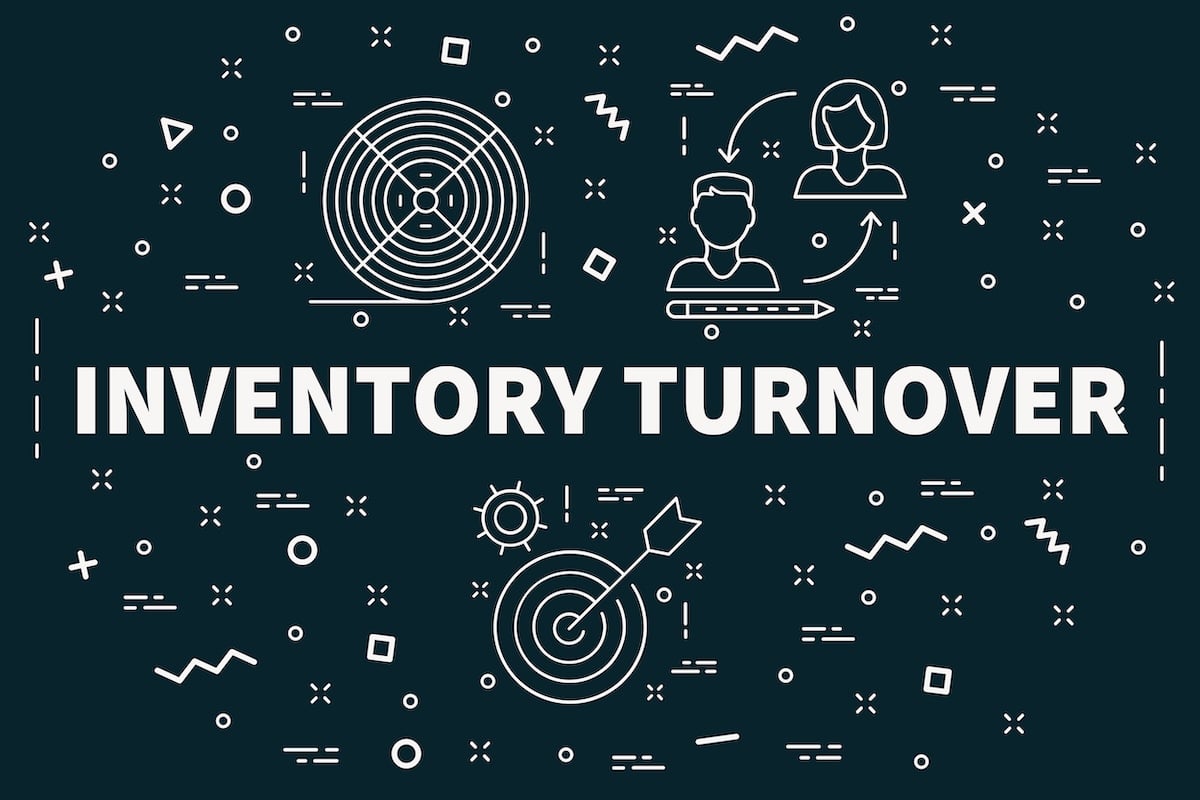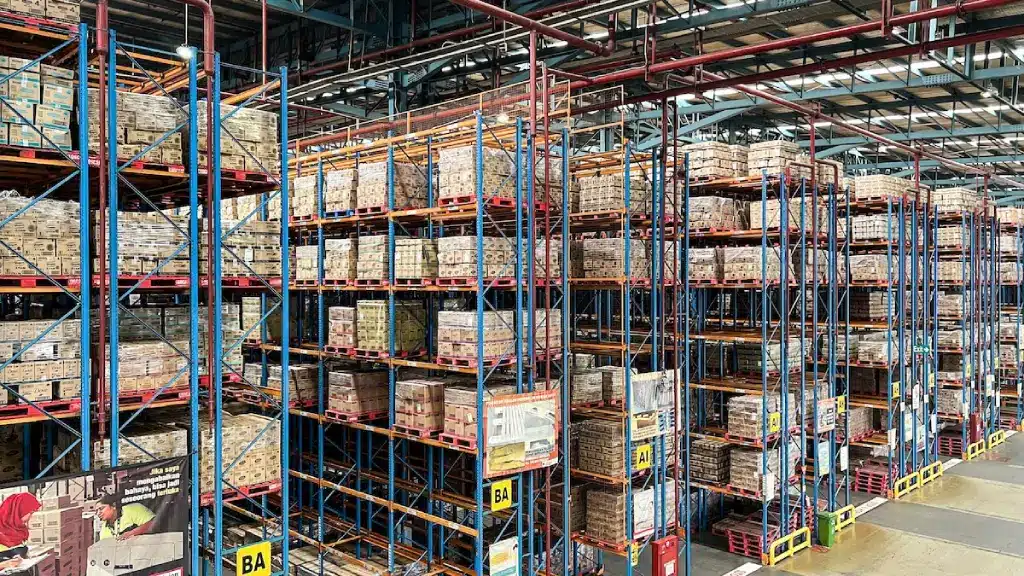
Order fulfillment is a critical process for businesses of all types, from ecommerce retailers to wholesalers. Whether you’re shipping direct to consumers or fulfilling bulk orders for distributors, an efficient and well-optimized order fulfillment process can make or break your business. This guide will show you how to implement fulfillment optimization strategies to boost efficiency and improve customer satisfaction across industries.
Key Takeaways
- A well-executed order fulfillment process, from receiving inventory to shipping, is critical for customer satisfaction and loyalty.
- Automation, optimized inventory management, and enhanced communication are key to boosting operational efficiency and cutting fulfillment costs.
- The right fulfillment strategy—whether in-house, using a third-party logistics provider (3PL), or dropshipping—depends on your order volume, customer expectations, and scalability needs.
Understanding Order Fulfillment

Order fulfillment is the process of completing sales by ensuring that sold items are delivered to customers efficiently. It involves several steps, including:
- Storing inventory
- Selecting items
- Packing them
- Shipping to customers
In today’s fast-paced ecommerce world, where giants like Amazon set high benchmarks, customers expect efficient and accurate order fulfillment. Meeting these high expectations requires a well-managed fulfillment process that leverages inventory management systems and order processing technologies. Effective fulfillment optimization is crucial for maintaining competitiveness and customer loyalty, especially as fast delivery becomes the norm.
Key Steps in the Order Fulfillment Process
The order fulfillment process involves several critical stages, including receiving, processing, picking, packing, and shipping goods. Each step is vital and contributes to the overall efficiency and effectiveness of the fulfillment process.
Receiving Inventory
Receiving inventory is the first step in the order fulfillment process. It involves multiple actions to ensure the correct products are stored efficiently:
- Acceptance of Shipments:
- Unload incoming shipments and check them against purchase orders to verify accuracy.
- Inspection for Damages:
- Inspect products for any signs of damage during shipping.
- Inventory Matching:
- Ensure the items received match the supplier’s order in terms of quantity, quality, and specifications.
- Storing Inventory:
- Properly store the products in designated warehouse locations.
Optimizing the receiving process minimizes the risk of damage and ensures products are quickly ready for the next steps in order fulfillment.
Storing Inventory
Efficient inventory storage plays a crucial role in speeding up order picking and reducing errors. Here are key actions for storing inventory effectively:
- Organize Inventory Strategically:
- Store frequently picked items in easily accessible areas to speed up the picking process.
- Categorize Items:
- Group similar or related products together for better flow during picking and packing.
- Use Inventory Management Tools:
- Leverage real-time inventory management systems to track product locations and quantities accurately.
- Regular Audits:
- Conduct regular audits to ensure inventory accuracy and prevent stock discrepancies.
Proper storage optimizes warehouse flow and minimizes picking errors, contributing to faster fulfillment.

Order Processing
Order processing begins when an order is received and consists of several critical steps:
- Order Verification:
- Confirm customer details, including delivery address and payment status.
- Ensure that the products ordered are available in stock.
- Order Management with a WMS:
- Using a WMS with order management features streamlines the flow of information between systems and teams.
- Automatically communicate order details, product availability, and shipping preferences to reduce processing errors.
- Picking Inventory:
- Zone Picking: Assign workers to specific zones to reduce travel time.
- Batch Picking: Pick similar items from multiple orders in one trip to boost efficiency.
- Discrete Picking: Pick items one order at a time to ensure accuracy, particularly for complex or high-value orders.
- Packing Orders:
- Secure items with appropriate packing materials.
- Include necessary documentation, like packing slips or return labels.
- Label packages clearly and accurately to ensure smooth delivery.
Shipping Orders
The final step in the order fulfillment process is shipping, and several key actions can help ensure customer satisfaction:
- Selecting a Shipping Carrier:
- Choose carriers that offer the best balance of cost and speed, especially for different regions or last-mile logistics.
- Many businesses use multiple carriers to optimize delivery based on location.
- Labeling and Documentation:
- Ensure shipping labels are accurate and clearly display the destination.
- Include any necessary customs forms or documentation for international orders.
- Pickup and Delivery:
- Coordinate with carriers for timely pickups or drop-offs.
- Ensure packages are securely packed to avoid damage during transit.
- Tracking and Communication:
- Provide customers with tracking information to keep them updated and build trust.
- Use automated systems to notify customers of delays or other issues, improving the customer experience.
Leveraging a WMS that integrates with shipping features can help streamline this process and ensure orders are delivered efficiently.
Benefits of Efficient Order Fulfillment
A well-executed order fulfillment process offers several key benefits:
- Cost Reduction:
- Reduces labor and operational overhead.
- Minimizes shipping expenses through streamlined packaging and fewer picking errors.
- Allows businesses to focus on core operations while leveraging third-party logistics providers to lower costs.
- Enhanced Customer Satisfaction:
- Improves accuracy in order fulfillment, resulting in fewer returns.
- Ensures timely deliveries, which is essential for maintaining a competitive edge.
- Builds customer trust with transparency in delivery times and tracking.
- Competitive Advantage:
- Faster order fulfillment enables quicker delivery, boosting customer satisfaction.
- Reduces operational costs, leading to more competitive pricing and better profit margins.
- Streamlined fulfillment processes can set you apart from competitors, fostering long-term success.
Common Challenges in Order Fulfillment
Businesses face several challenges during the order fulfillment process. Here are common hurdles and potential solutions:
- High Order Volumes: Seasonal spikes or promotions can overwhelm fulfillment operations.
- Solution: Automate repetitive tasks, optimize warehouse layout, or partner with third-party logistics providers (3PLs) to handle peak demand.
- Inventory Accuracy: Inaccurate stock levels lead to stockouts or overstocking, impacting customer satisfaction and revenue.
- Solution: Implement real-time inventory tracking and conduct regular audits to ensure accuracy.
- Delivery Expectations: Meeting customer demands for fast, reliable deliveries is increasingly difficult, especially for international shipments.
- Solution: Use multiple carriers, localize inventory, and optimize shipping strategies to improve delivery times and reliability.
Best Practices for Optimizing Order Fulfillment

Here are some best practices to improve your order fulfillment process:
- Implement Automation:
- Use fulfillment technologies like a warehouse management system (WMS) to automate inventory tracking and order picking.
- Automate shipment tracking and notifications to reduce errors and improve efficiency.
- Optimize Inventory Management:
- Leverage inventory management systems with predictive analytics to maintain optimal stock levels.
- Use real-time inventory systems to avoid stockouts and overstocking.
- Consider localizing inventory for faster shipping times.
- Enhance Communication:
- Improve communication between departments with real-time updates on inventory and orders.
- Provide customers with tracking details and timely notifications about their orders.
Choosing the Right Order Fulfillment Strategy
Choosing the right order fulfillment strategy is crucial for supporting long-term business growth and operational efficiency. The most common strategies are in-house fulfillment, outsourcing to third-party logistics (3PL) providers, and dropshipping. Each option has its own advantages and challenges, and the best choice depends on factors like order volume, customer expectations, and the need for scalability.
In-House Fulfillment
In-house fulfillment, also known as merchant fulfillment, involves the seller managing the entire process themselves. This option is typically more cost-effective for small businesses with low order volumes. It allows for greater control over the fulfillment process, which is particularly beneficial for products that are custom-made, gift-wrapped, or fragile.
However, as the business grows, in-house fulfillment can become both costly and difficult to scale. For companies shipping only a few orders each week, the need for a full inventory or warehouse management system may be minimal. But for businesses experiencing growth, a robust warehouse management system (WMS) like Logimax WMS can help optimize fulfillment operations by providing real-time inventory management and streamlining order processing.
While in-house fulfillment offers control and customization, it may become unsustainable as order volumes increase and operations grow more complex. Implementing a scalable WMS solution can help businesses manage this growth more efficiently.
Third-Party Logistics (3PL)
A third-party logistics (3PL) provider manages the entire order fulfillment process on behalf of businesses. These providers offer specialized infrastructure and services that make handling large order volumes more efficient. By partnering with a 3PL, ecommerce retailers can focus on strategic business growth while the logistics provider takes care of shipping, returns processing, and scaling solutions as order volumes fluctuate.
One of the key considerations when choosing a 3PL provider is trust. A 3PL partner must be capable of handling your inventory efficiently and ensuring that the customer experience is not compromised. This is particularly important for fast-growing ecommerce businesses where order volumes are increasing and customer satisfaction is a priority.
By leveraging 3PL capabilities, businesses can enjoy significant efficiencies, cost savings, and access to global fulfillment networks.
Dropshipping
Dropshipping is a fulfillment model in which businesses don’t hold inventory or handle shipping directly. Instead, the manufacturer or supplier produces, stores, and ships the products to customers after receiving the order from the merchant. This allows businesses to sell products without needing to manage physical inventory.
However, dropshipping comes with its own set of challenges. Merchants have little to no control over the fulfillment process, which can affect customer satisfaction. Additionally, since shipping is dependent on third-party suppliers, delivery times may be longer, and costs can be higher compared to other fulfillment methods.
While dropshipping simplifies inventory management and reduces upfront costs, it can complicate efforts to meet customer expectations for timely and reliable delivery.
Leveraging Technology for Better Order Fulfillment

Technology plays an essential role in improving order fulfillment by enabling more accurate demand forecasting and efficient management of order processing. From Warehouse Management Systems (WMS) to Artificial Intelligence (AI), the right technologies can significantly enhance operational efficiency and customer satisfaction.
Warehouse Management Systems (WMS)
A Warehouse Management System (WMS) is a powerful tool that facilitates real-time inventory tracking, improving accuracy and reducing errors throughout the fulfillment process. WMS systems help implement advanced picking strategies such as wave, zone, and batch picking, which can minimize travel time for warehouse staff and improve overall productivity.
By optimizing inventory management and streamlining warehouse operations, a WMS leads to increased operational efficiency and higher levels of customer satisfaction.
Transportation Management Systems (TMS)
Transportation Management Systems (TMS) streamline shipping by optimizing route planning and improving carrier selection. TMS helps businesses reduce transportation costs through better load optimization and real-time tracking of shipments. By negotiating better carrier rates and optimizing delivery routes, a TMS enables significant cost savings while maintaining shipping efficiency.
The result is enhanced shipping operations that help businesses lower their overall logistics costs while improving delivery performance.
Artificial Intelligence (AI)
While Artificial Intelligence (AI) is starting to make its way into some warehouse operations, its widespread adoption is still on the horizon. AI offers promising benefits by automating tasks like order verification, product matching, and optimizing picking routes. As the technology matures, AI-driven tools will likely play a much larger role in order fulfillment by reducing lead times and ensuring more accurate deliveries.
AI also has the potential to enhance inventory management through predictive analytics, helping businesses manage stock levels more efficiently. However, many warehouses are still in the early stages of implementing AI, and we can expect to see its role in order fulfillment grow significantly in the coming years as the technology becomes more accessible and scalable.
Optimize Your Order Fulfillment with Logimax WMS
To truly boost efficiency and customer satisfaction in your order fulfillment process, implementing the right technology is key. Logimax Warehouse Management System (WMS) offers powerful tools that streamline every step of the fulfillment process, ensuring accuracy, speed, and cost savings. Here are some top features that make Logimax WMS an ideal solution for improving order fulfillment:
- Advanced Inventory Management: Real-time tracking of inventory levels prevents stockouts and overstocking, ensuring that your warehouse operates smoothly and keeps up with demand.
- Optimized Picking and Packing: Leverage advanced picking strategies like batch, zone, and wave picking to speed up order processing, reduce errors, and improve labor efficiency.
- Seamless Integration: Logimax WMS integrates easily with Transportation Management Systems (TMS), Enterprise Resource Planning (ERP) platforms, and other key supply chain systems, allowing for seamless communication and coordination.
- Scalability for 3PL and In-House Operations: Whether you manage fulfillment internally or through a third-party logistics (3PL) provider, Logimax WMS scales to meet your business needs, handling fluctuations in order volume and complexity with ease.
By implementing Logimax WMS, you can enhance your fulfillment process, reduce operational costs, and deliver exceptional customer experiences. Contact us today to learn more about how Logimax WMS can help optimize your operations.
Summary
An optimized order fulfillment process is essential for any business looking to achieve long-term success. By improving each step, from receiving inventory to shipping orders, and incorporating advanced fulfillment technologies like a WMS, businesses can reduce costs, enhance customer satisfaction, and gain a competitive advantage. Choosing the right fulfillment strategy and leveraging the power of inventory management systems and order processing tools will ensure your operations are scalable and efficient.
Looking to streamline your order fulfillment process? Discover how Logimax WMS can help optimize every step, from receiving inventory to shipping. Contact us today to learn more.
Frequently Asked Questions
What is order fulfillment?
Order fulfillment is the process of ensuring customers receive their purchases, from storing inventory and selecting the right items to packing and shipping them out. It’s a key part of keeping your customers satisfied and ensuring repeat business.
How does efficient order fulfillment reduce costs?
Efficient order fulfillment reduces costs by lowering labor and operational expenses. It maximizes economies of scale and uses advanced systems, like a WMS and TMS, to streamline processes. This not only helps you save money but also improves service quality.
What are the common challenges in order fulfillment?
Common challenges include handling high order volumes, maintaining inventory accuracy, and meeting fast delivery expectations. Addressing these issues is crucial for improving efficiency, reducing costs, and keeping customers happy.
How can technology improve order fulfillment?
Technology plays a pivotal role in improving order fulfillment by automating processes, reducing errors, and providing real-time visibility. Software like Warehouse Management Systems (WMS) and Transportation Management Systems (TMS) help track inventory, optimize picking and packing, and streamline shipping.
What are the different order fulfillment strategies?
The three main fulfillment strategies are in-house fulfillment, outsourcing to third-party logistics providers (3PL), and dropshipping. Each strategy offers different benefits depending on factors like order volume, scalability, and customer needs. Choosing the right strategy can help you improve efficiency and grow your business.



